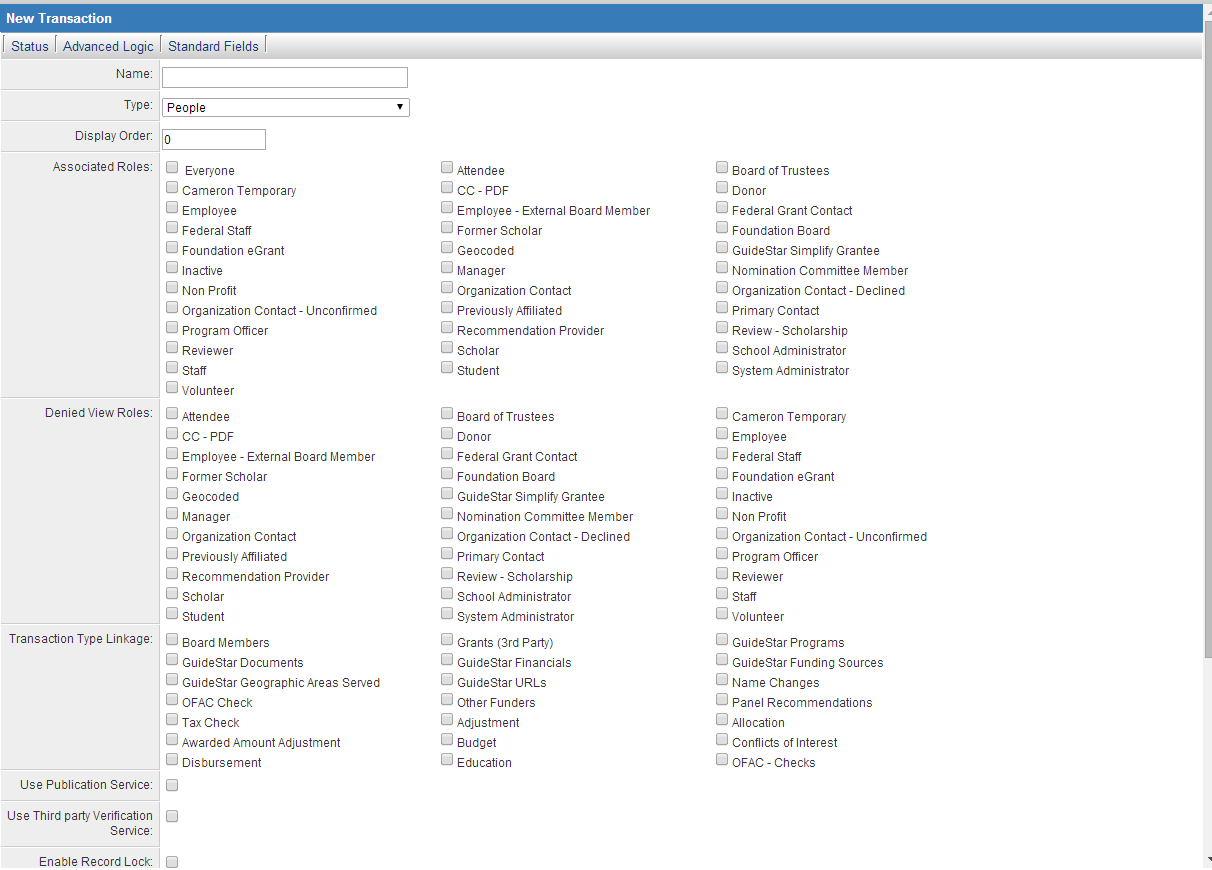Personal Transaction
Set of custom fields grouped together into a specific transaction type and linked to a role. For example, a candidate role may have a career type transaction. Multiple transaction records can be linked to a single contact in that role.
Personal transactions also represent items that the user maintains in their profile using the UCI.
- The administrator defines the transaction types.
- Examples of transaction types are education, work history, or publications history.
- Each transaction type supports custom fields, a list view template, and the ability to control if the transaction type is available to the user, via the UCI.
- Each transaction type can be associated with one or more roles within the system.
- These transactions are also visible within the administrative interface for each contact.
- When a user subscribes to a folder, their profile becomes searchable to all other users subscribed to the folders.
- The Administrator defines the folders and associates the folders with each UCI.
- These folders are actually constructs from the SmartSimple Applicant Tracking system.
Creating a Personal Transaction Type
1. Click Configuration, User Centric Interface menu.
2. Click the Transaction Types tab.
3. Click the New Type tab.

Each Transaction type consists of the following standard settings:
- Name - name of the transaction type. For example: Education.
- Type - choose people, for people-related transactions or company, for company-related transactions.
- Display Order - the order in which the transaction types should be listed, in both the administrative interface, and the UCI.
- Associated Roles - the roles to be associated with this transaction type. Use everyone to associate the transaction type with all users.
- Deny Review Roles - the roles to be associated with this transaction type that you want to deny view ability.
- Use Publication Service – indicates that this transaction type can be completed using a web service such as PUBMED. Enabling this option will display a service lookup link in the User Centric Interface when the user adds a transaction of this type.
- Use Third party Verification Service - You can store the values returned from the external database search in the transaction custom fields.
- Built-in Fields - there are four standard fields associated with a generic transaction type: start date, end date, subject, and description. If these fields are not required, set their label settings to blank.
- Field Button - provides a link to the custom field list for this transaction type.